UPSC Daily Current Affairs- 4th February 2024 | Current Affairs & Hindu Analysis: Daily, Weekly & Monthly PDF Download
| Table of contents |

|
| GS-II |

|
| National Research Foundation |

|
| How Political Parties are created in India? |

|
| GS-III |

|
| Aldabra rail |

|
| INS Sandhayak |

|
| Stingless bees |

|
| A rising tide lifts all boats |

|
GS-II
National Research Foundation
Subject: Government Schemes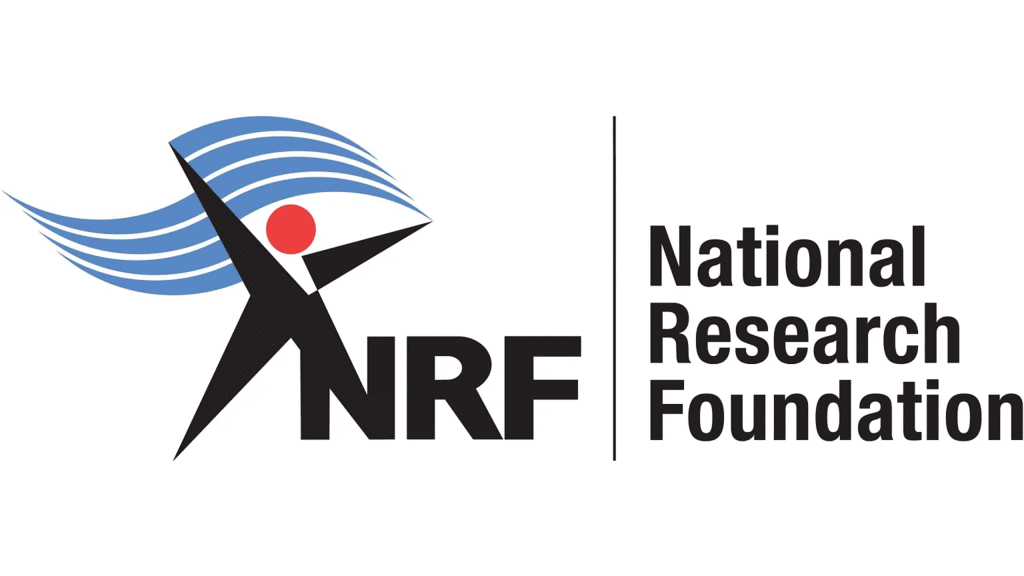
Why in News?
Despite approving a Bill to set up a National Research Foundation (NRF) to boost scientific advancement in the country just eight months earlier, the Union government was silent on allocation for the institution or progress made so far in the interim budget for 2024-25.
About National Research Foundation:
- It is an apex body to provide high-level strategic direction of scientific research in the country in accordance with the recommendations of the National Education Policy (NEP), will be established at a cost of 50,000 crore over the period 2023-28.
- It enhances “India’s national research infrastructure, knowledge enterprise, and innovation potential, for scientific pursuit”.
- Goals: To increase private sector contributions to research in India and to ensure that a larger portion of government funds go to state universities and colleges.
- Nodal Agency: The Department of Science and Technology (DST) will be NRF's administrative department.
- Governing body:
- The Prime Minister will be the ex-officio President of the Board.
- The Union Minister of Science & Technology & Union Minister of Education will be the ex-officio Vice-Presidents.
- NRF’s functioning will be governed by an Executive Council chaired by the Principal Scientific Adviser to the Government of India.
- Functions
- Forge collaborations among the industry, academia, and government departments and research institutions, and create an interface mechanism for participation and contribution of industries and State governments in addition to the scientific and line ministries.
- It will focus on creating a policy framework and putting in place regulatory processes that can encourage collaboration and increased spending by the industry on R&D.
Source: DTE
How Political Parties are created in India?
Subject: Polity and Governance
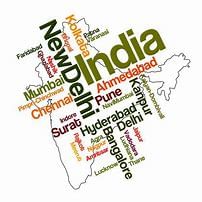
Why in News?
Tamil superstar Thalapathy Vijay’s announcement of his political party has sparked interest in the process of registering political entities in India.
Creating a Political Party
- Legal Framework: Article 324 of the Indian Constitution and Section 29A of the Representation of the People Act, 1951 empower the Election Commission to lay down guidelines for party registration.
- Application: A party seeking registration must apply to the Election Commission within 30 days of its formation.
- Public Notice: The applicant must publish the proposed party name in two national and two local daily newspapers. The notice is also posted on the Election Commission’s website.
- Documentation: The application, in a prescribed format, must be sent to the Election Commission Secretary within 30 days of party formation. It should include a demand draft of Rs. 10,000, a printed copy of the party’s memorandum, rules, or constitution, and the latest electoral rolls for at least 100 party members.
- Affidavits: An affidavit, duly signed by the President or General Secretary and sworn before a Magistrate/Notary Public, is required. Additionally, individual affidavits from 100 members confirming non-membership in any other registered political party are essential.
Need for Registration
- Not Mandatory: Registration with the Election Commission is not mandatory but comes with advantages under the Representation of the People Act, 1951.
- Symbol Allotment: Registered party candidates receive priority in the allotment of free symbols over independent candidates.
- State or National Recognition: Parties can achieve recognition as ‘state parties’ or ‘national parties,’ subject to fulfilling conditions laid out in the Election Symbols (Reservation and Allotment) Order, 1968.
Recognition Criteria
- State Party: To be recognized as a state party, a registered party must meet any of these five conditions:
- Secure at least 6% of valid votes and win at least 2 seats in an Assembly General Election.
- Secure at least 6% of valid votes and win at least 1 seat in a Lok Sabha General Election.
- Win at least 3% of the seats or at least 3 seats, whichever is more, in an Assembly General Election.
- Win at least 1 out of every 25 seats from a state in a Lok Sabha General Election.
- Secure at least 8% of the total valid vote in an Assembly or Lok Sabha General Election.
- National Party: To attain national party status, a registered party must meet any of these three conditions:
- Secure at least 6% of valid votes in an Assembly or Lok Sabha General Election in four or more states and win at least 4 seats in a Lok Sabha General Election from any state.
- Win at least 2% of total Lok Sabha seats in a Lok Sabha General Election, spanning at least 3 states.
- The party is recognized as a State Party in at least four states.
Benefits of Recognition
- Reserved Symbol: State parties receive a reserved symbol within the state, while national parties can use the reserved symbol across the country.
- Nomination Ease: Such parties require only one proposer for filing nominations.
- Free Electoral Rolls: They are entitled to two sets of electoral rolls free of cost.
- Media Access: Recognized parties can use state-owned Akashvani/Doordarshan facilities for broadcasting/telecasting during general elections.
- Additional Perks: Recognized parties can avail of other advantages such as subsidized land for party offices, among others.
Source: DNA
[Intext Question]
GS-III
Aldabra rail
Subject: Environment and Ecology
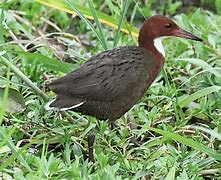
Why in News?
The flightless Aldabra rail went extinct over 130,000 years ago, but the species then reappeared via iterative evolution.
About Aldabra rail:
- Scientific name: Dryolimnas cuvieri aldabranus
- It lives on a coral atoll off the southeast coast of Africa.
- Appearance: It's about the size of a chicken, with a flecked gray back, a rusty red head and chest and a white throat.
- It is a subspecies of the white-throated rail (Dryolimnas cuvieri) and is the only living flightless bird in the Indian Ocean.
- In losing its ability to fly once again, the Aldabra rail has essentially evolved twice, rising from the dead through a process called iterative evolution.
- A 2019 study published in the Zoological Journal of the Linnean Society examined the fossil record of rails in Aldabra and found evidence of a flightless rail on the atoll from before it was submerged beneath the waves 136,000 years ago.
What is Iterative evolution?
- Iterative evolution can be defined as "the repeated evolution of a specific trait or body plan from the same ancestral lineage at different points in time."
Source: Live Science
INS Sandhayak
Subject: Defence and Security
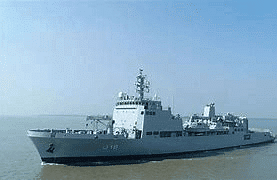
Why in News?
The Indian Navy commissioned its latest survey vessel, Sandhayak, at Naval Dockyard in Vizag in the presence of defence minister.
About INS Sandhayak:
- It is the first in a series of four Survey Vessel (Large) ships being constructed at Garden Reach Shipbuilders & Engineers (GRSE), Kolkata
- The primary purpose of the ship is to conduct comprehensive coastal and deep-water Hydrographic Surveys for Port and Harbour approaches, as well as determining navigational channels and routes.
- The operational zone extends up to maritime limits, covering the Exclusive Economic Zone (EEZ) and extended continental shelf.
- Additionally, the vessel is equipped to gather oceanographic and geophysical data, serving both defence and civil applications.
- In its secondary role, the ship can offer limited defence capabilities and serve as a hospital ship during wartime or emergencies.
- It is equipped with cutting-edge hydrographic tools, including a Data Acquisition and Processing System, Autonomous Underwater Vehicle, Remotely Operated Vehicle, DGPS Long-range positioning systems, and Digital side-scan sonar.
- Powered by two diesel engines, the vessel boasts a speed capability exceeding 18 knots.
- Measuring 110 meters in length and displacing 3400 tons, INS Sandhayak has an indigenous content of over 80 per cent by cost.
- This ship is re-incarnated in its present avatar from erstwhile Sandhayak, which was decommissioned in 2021.
Source: PIB
[Intext Question]
Stingless bees
Subject: Environment and Ecology
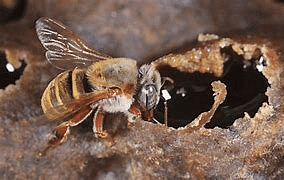
Why in News?
To protect Amazon, conservators try to save pollinator Stingless bees.
About Stingless bees:
- A stingless bee is a bee that appears very similar to a honeybee, but is incapable of stinging.
- These bees are eusocial, which means that they live together in hives and produce honey.
- These are native to the Amazon.
- Their honey, which is runny enough to be drunk like a liquid and is said to have a citrusy aftertaste.
- It is used by many Indigenous Peruvians as a natural medicine.
- Distribution: Stingless bees can be found in most tropical and subtropical regions.
- These bees cannot sting but nature has made sure to give them other ways of defending themselves.
- These bees do possess stingers, but they are too small to be useful in defense. Instead of stinging, stingless bees use their mandibles to bite their attackers.
- Threats:
- The Amazon is home to hundreds of species of stingless bee, but as deforestation converts the tropical landscape into farms and ranches, these and other native pollinators are in danger of disappearing.
Source: New York Times
A rising tide lifts all boats
Subject: Economics

Why in News?
India has experienced a significant economic transformation, becoming the world’s fastest-growing economy. The Interim Budget reflects this progress, emphasizing preventive healthcare, innovation, and medical value travel. The private sector’s rising role is crucial for economic development and improving the overall quality of life.
Key Highlights:
- India’s rapid economic growth, outpacing the global average.
- Successful space program and adept management of renewable and non-renewable energy.
- Interim Budget aligns with the aspirations of a new India, emphasizing opportunities.
- Focus on preventive healthcare, particularly the promotion of HPV vaccination.
- Maternal and child health prioritized to enhance women’s participation in the workforce.
- Commitment to innovation with a ₹1 lakh crore corpus for research and technology.
- Medical value travel’s rising prominence, making India a global healthcare destination.
- Private sector’s significant role in economic growth and shaping the future.
Key Challenges:
- Ensuring sustained economic growth amidst global uncertainties.
- Scaling up preventive healthcare initiatives to cover various diseases.
- Balancing budget allocations to address healthcare needs adequately.
- Overcoming infrastructure challenges for medical value travel.
- Ensuring inclusive growth and managing disparities in economic development.
Key Terms:
- HPV Vaccination: Human Papillomavirus vaccination to prevent cervical cancer.
- Medical Value Travel: Tourism driven by healthcare services.
- Innovation Revolution: Emphasizing technology and research for development.
- Interim Budget: A temporary budget presented in the middle of a fiscal year.
Key Phrases:
- “Buoyancy of metrics and spirit.”
- “Innovation as a key pillar of development.”
- “Medical value travel transforming the landscape.”
- “Private sector rising beyond expectations.”
Key Quotes:
- “No country can afford it if its citizens fall ill.”
- “Innovation has the potential to create a significant impact at scale.”
- “India will truly be limitless if we continue to work together.”
Anecdotes:
- Reference to Aragonda in Andhra Pradesh, a village where HPV vaccination is being promoted.
- Mention of ‘Heal in India’ transforming the healthcare landscape.
Key Statements:
- “India’s space program has won the admiration of the world.”
- “Preventive health is crucial for the overall well-being of the nation.”
- “The private sector plays a meaningful role not just in the economy but in how we live our lives.”
Key Examples and References:
- India’s success in achieving a 70-year life expectancy with less than 2% budgetary allocation for health.
- The commitment of ₹1 lakh crore for innovation and technology in the Interim Budget.
Key Facts:
- India’s economic growth rate surpassing the global average.
- Increase in life expectancy from 53 to 70 years in the last four decades.
Key Data:
- ₹1 lakh crore corpus for research and technology in the Interim Budget.
- India’s growth rate compared to the global average.
Critical Analysis:
- The article provides an optimistic view of India’s economic growth and achievements.
- Emphasis on preventive healthcare and innovation aligns with global trends.
- Challenges include addressing healthcare needs comprehensively and ensuring inclusive growth.
Way Forward:
- Sustain economic growth through continued emphasis on innovation and technology.
- Strengthen preventive healthcare initiatives for comprehensive disease prevention.
- Address infrastructure challenges for medical value travel to enhance India’s global healthcare appeal.
- Ensure inclusive growth, managing economic disparities effectively.
Source: The Hindu
[Intext Question]
|
38 videos|5288 docs|1117 tests
|
FAQs on UPSC Daily Current Affairs- 4th February 2024 - Current Affairs & Hindu Analysis: Daily, Weekly & Monthly
| 1. How is the National Research Foundation established in India? |  |
| 2. What is the process of creating a political party in India? |  |
| 3. What is the significance of the Aldabra rail? |  |
| 4. What is the role of INS Sandhayak in the Indian Navy? |  |
| 5. What are stingless bees and why are they important? |  |















